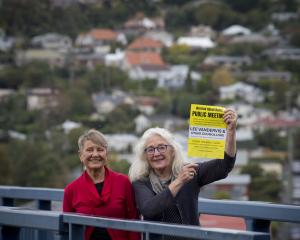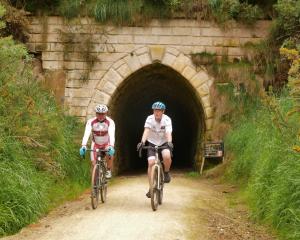A study highlighting the ''massive'' potential health gains in switching to active transport underscores the value of investing in cycleways, the Dunedin City Council says.
The findings showed swapping short car trips for walking or biking could achieve as much health gain as ongoing tobacco tax increases, according to the research from the University of Otago, Wellington department of public health.
Lead author Anja Mizdrak, of Otago's burden of disease epidemiology, equity, and cost-effectiveness programme, said transport had a major impact on population health.
New Zealand remained highly car-dependent - 79% of all self-reported trips being made by car and ownership rates are among the highest in the world - and only half of New Zealand adults meet national physical activity recommendations.
Road transport was also responsible for 17.3% of New Zealand's greenhouse gas emissions, ''so it directly affects injury rates, physical activity and air pollution, and indirectly affects health through climate change''.
''Switching short trips to walking and cycling is a good way to incorporate physical activity into daily life and reduce carbon emissions associated with vehicle use,'' Dr Mizdrak said.
Dunedin City Council transport group manager Richard Saunders said the study supported the council's long-term investment in walking and cycling infrastructure.
''Walking and cycling infrastructure is a critical part of the transport network to ensure people have better transport choices,'' he said.
The study, just published in PLOS One, is the first to estimate the health impact, and changes in health system costs and greenhouse gas emissions, associated with increasing active transport in New Zealand.
The researchers estimated changes in physical activity, injury risk, and air pollution for switching car trips under 1km to walking, and switching car trips under 5km to a mix of walking and cycling.
They used modelling to perform a ''what if'' analysis of uptake levels of 25%, 50% and 100%, and then estimated health gains and health system cost impacts of changes in injury risk, air pollution exposure and physical activity levels.
Health impacts across these different risks were combined into a common metric, quality adjusted life years (QALYs), where one QALY represents a year lived in full health, which were calculated out over the rest of the life course of the New Zealand population alive in 2011 (4.4 million people).
Depending on uptake levels, health gains ranged between 1.61 and 25.43 QALYs per 1000 people, with total QALYs up to 112,000 over the remaining lifespan, and healthcare cost savings ranged from $127million to $2.1billion over the remaining life span, with about 4% of this total saved in the next 10 years.
Greenhouse gas emissions were reduced by up to 194 kilotonnes CO2-e (CO2 equivalents) per year - the equivalent of 64,000 people flying from London to Auckland.
Co-author Tony Blakely, also of the department of public health, said health gains would be ample.
''If people swapped their car for walking or biking for just one quarter of short trips, the health gains would be comparable to the health gain we have estimated previously for 10% per annum tobacco tax increases from 2011 to 2025.''\
- 79% of all self-reported trips are made by car.
- 56% of car trips are under 5km (12% are under 1km).
- New Zealand has among the highest car ownership rates in the world.
- 17.3% of gross greenhouse gas emissions are related to road transport.
- Only half of adults meet the national physical activity recommendations.












